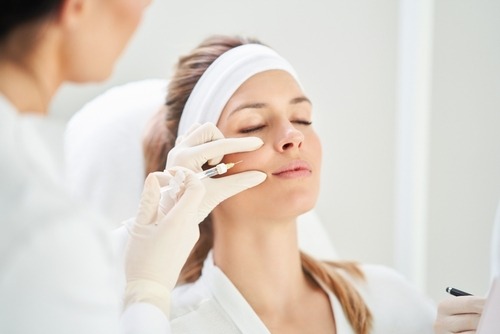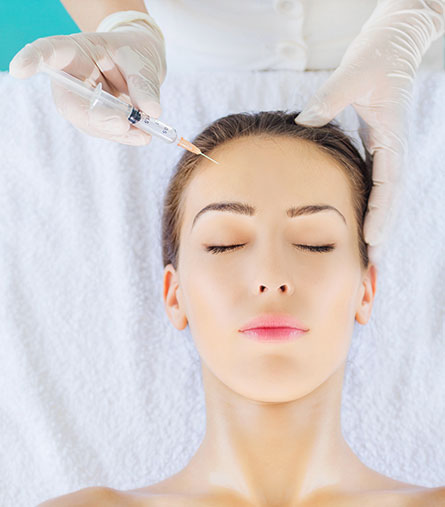What is Botox Used for in Dermatology?

Botox, a potent neurotoxin, has been around for decades, originally used for ocular conditions. Today, it’s best known for its role in the dermatology world, coveted for its role in battling the signs of aging. Its uses are far-reaching, helping people address various cosmetic concerns, from crow’s feet to forehead furrows.
The effects of Botox are transformative, dimming the signs of aging and helping people retain their youth by “freezing” the muscles of the face. In this blog, we’ll explore Botox and its role in the dermatology world and beyond.
What is Botox?
Botox is a cosmetic form of the botulinum toxin, known as a “miracle poison.” The anaerobic, spore-forming bacterium Clostridium botulinum, commonly found in the intestinal tracts of animals, soil, water, and plants, is responsible for producing this toxin.
While it’s one of the most poisonous biological substances known, it earns its name as a “miracle poison.” Over the years, it has found its role in various medical applications, helping block chemical signals that cause muscles to contract.
Aside from its well-known uses in dermatology, healthcare providers also use it to help alleviate symptoms associated with various health conditions. Today, this toxin is used in nearly every sub-specialty of medicine, boasting FDA approval for treating various conditions and concerns.
Understanding the Role of Botox in Dermatology
In the dermatology world, Botox is a well-known tool favored for its power in preserving smooth, wrinkle-free skin. It’s most commonly used to combat the signs of aging. Providers harness its muscle “freezing” power to prevent wrinkles that accompany age, administering injections throughout the face.
For example, it’s commonly used for:
- The “11s,” or the frown lines between the eyebrows
- Crow’s feet, or the splayed crinkles along the outside corner of the eye
- Smile lines
- Forehead furrows
- Lip lines
- Diminish neck bands
It can even be used to create the illusion of a slimmer face by working on the prominent jaw muscles responsible for creating a wide or square face shape.
How Does Botox Work in Dermatology Applications?
Botox helps smooth the skin and battle the signs of aging by “freezing” the muscles in the area. Since it can block the nerve signals that tell the muscle to contract, it limits the facial expressions responsible for creating those lines.
For example, Botox is often used on the muscles in the upper face to combat pesky “11s” and forehead furrows. When injected into muscles in this area, it “freezes” that area, preventing you from frowning or making the expression that causes the lines and wrinkles in those areas.
Botox in Alternative Applications
While the botulinum toxin is often used in cosmetic dermatology, it serves a vital role in addressing many other conditions. Botox does the same thing in every application, regardless of whether it’s being used for a cosmetic concern or a health condition.
It’s important to note that it isn’t a cure, but it has been used to treat various conditions, including:
- Migraines
- Foot pain
- Stomach issues
- Overactive bladder
- Crossed eyes and eyelid spasms
Frequently Asked Questions About Botox
How Long Do Botox Injections Last?
Botox injections typically last anywhere from three to four months, although the exact timeframe can vary based on factors specific to you. Most patients notice the neurotoxin begins to wear off after a few months, although some may notice its effects wane after just two months, while it may take up to six months to wear off in others.
What Does Botox Do?
Botox relaxes the muscles in the treated area by blocking specific chemical signals the nerves send to contract the muscles. In essence, it “freezes” the muscles for a few months.
Are There Risks Associated With Botox Injections?
While Botox injections are widely considered safe when administered by a licensed and experienced healthcare professional, there can be risks involved when administered incorrectly. For example, some patients might notice flu-like symptoms, droopy eyelids or eyebrows, and watery or dry eyes if the injection isn’t properly administered.
Harness the Rejuvenating Power of Botox With Clarus Dermatology
At Clarus Dermatology, we’re all about helping people look and feel their best, whether they’re searching for medical treatments or cosmetic services. If you’re looking for a solution to smooth pesky forehead furrows or diminish the appearance of neck bands, Botox might be an excellent solution.
Our team of experienced dermatology providers is here to help you navigate your skin concerns, whether you want to smooth facial wrinkles or tackle persistent acne. So, if you would like to embark on a skin-smoothing journey with Botox, we can help. Schedule an appointment today to get started.


